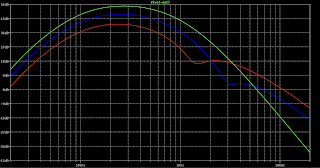The tone section is slightly different from a regular Big Muff, and retains more high-end across the range. This is what makes it stand apart from other Big Muffs - which is just one capacitor. Note that the new Earthquaker Devices version has a 3n3 capacitor instead of the 330p in the filter section. There are some other small differences, 50k pots instead of 100k, but that’s mainly it. 3n3 takes it closer to a regular BMP.
There's an interesting article here from Tym guitars about cloning an Elk. TLDR version: The values on the schematic needed tweaking to match the sound of the vintage pedal he had on his bench to clone, likely due to components drifting over time (a lot). BC547's matched the original transistors the best - unfortunately, no mention of the values he used in his clone...
Looking at gut shots, there are clearly a few manufacturing differences between manufacturers back in the day in Japan - who knows what this resulted in?
SUPER FUZZ SUSTAINAR CIRCUIT ORIGINS
It's based on an early V1 Triangle Big Muff, which also used PNP transistors.
Transistors
I've seen 2SA733 listed on the schematic, as well as SA495 in photos. Both are Japanese PNP transistors of around 240hfe.
Resistors
Some versions have used carbon comp resistors and some carbon film. While that generally doesn't have any effect on the sound as such (although some will argue it does). Carbon comp was never that tight in terms of tolerances to start with (often +/-10%), and they do tend to drift upwards in value over time. This will add to variances between different examples, especially when combined with capacitors to form filters. So on to capacitors now.
Capacitors
Elk seems to have used cheap ceramic capacitors, which have had a massive range of allowable variance even when they were new. This might help explain why some Elks are thought of as good and some not so good.
Note the values on the capacitors - 104Z. That's 100n, with a tolerance of +80% / -20%. Basically the worst tolerance you can find on a capacitor. So that 100n cap could be anywhere between 80n to 180n. Add to this the variance of resistors, and you have some quite variable filters.
I haven't seen any of the tolerances or values of the capacitors in the tone section, as who knows, they may have a better spec than the 100n capacitors used. If they aren't - this would really make the Elks quite variable between different examples. The filter values would be all over the place.
Example: A 39k resistor and a 330pf capacitor form a 12.3khz high pass filter in the tone section (which is incredibly high). If the 330p cap has a plus / minus variance of 80 and 20%, like some of the other capacitors, the resulting HPF could be anywhere from 6.8khz to 15.4khz. This is a pretty large difference. Note that the HPF for a Triangle Muff from this era is approx 1khz (39k resistor with a 4n cap)
Gutshot from an Electro Sounds version - some capacitor values are different.
The 50n capacitor in the clipping section of this example below is also a Z spec. Could be right on 50n, or anywhere between 40 and 90n
ELK SUPER FUZZ SUSTAINAR - VERO LAYOUT
And if you haven't worked it out yet, I like clean-looking layouts with nice lines. Probably totally unnecessary, but I like it.
Noting all of the variables mentioned above - if you have a breadboard, I'd suggest using it to tweak some values to get it to a place where you are happy with it sounding like a vintage version.
I would go as far as to say that you will probably be dissatisfied with the stock values listed on the schematics and this layout.
ELK SUSTAINAR - COMPACT VERO LAYOUT
And clearly, this is a more compact version that will be a tad trickier to solder. Note the grey and red lines are just a reference in terms of power and earth rails.
SUPER FUZZ SUSTAINAR SCHEMATIC
Values from Kit Rae's Big Muff site - note that the original used PNP transistors; swapping to NPN makes no difference to the sound.
The only real difference between this and an early Triangle Big Muff is the capacitor C9, which forms a high pass filter with R5. The Big Muff value was 4nf, and it's 330pf in the Elk. One could easily add a Triangle switch, with an extra capacitor added to the 330pf to get around 4nf.
Do not expect it to sound like any of the video demos you hear using stock values. Note everything mentioned above.
LTSPICE FREQUENCY RESPONSE
Sine wave, 100mv, 440hz: output response: gain 100%, tone at 0, 50k & 100k
Boost, clipping stages response: gain 100%
This is the tone section response isolated from the rest of the circuit.
As above with Big Muff values
LTSPICE TRACES
Sine wave, 100mv, 440hz: gain 100% taken at boost, first and second clipping stage












2 comments:
The wider layout works and sounds great—it's just barely able to fit in a 1590BB enclosure. It's a nice muff variant for sure.
Yeah, the 32 column layout is the upper limit. I like layouts to look like the schematics as much as they can do, as I find it easier to follow / build.
Post a Comment